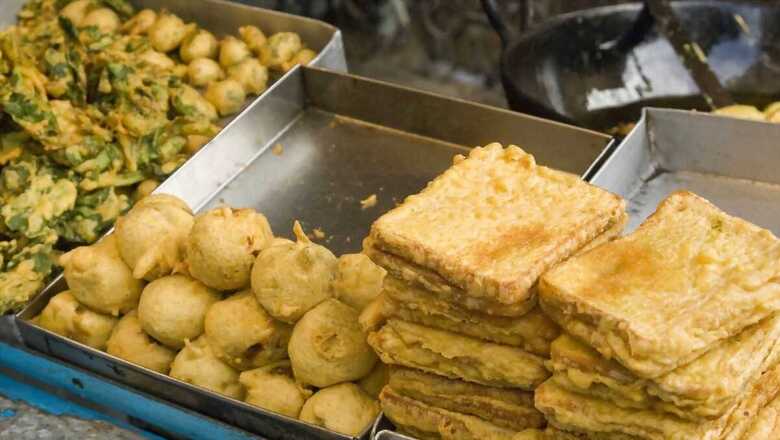
views
It was like waiting for Godot. We, for the last few months sat, discussed, conjectured and even postulated about climate change, global warming, and about how rising temperatures are fuelling longer and hotter heat waves. This was only and only because the rains hadn’t yet arrived in Mumbai. The heat was getting to us, the humidity was entering our bones, and no matter much the Mumbaikar may lament about floods, traffic jams and collapsing bridges, the Mumbaikar loves the rains. So finally, like in Godot, after all the absurdity of existence, the purposelessness of life, and increased suffering with the passage of time, the rains finally arrived in Mumbai. And what a relief the rains brought with them. Temperatures and tempers all dropped a few degrees lower.
The city now looks spankingly clean, the trees have changed from various hues of brown and grey to a bright palate of greens, the tar and asphalt are black and shiny and the people, look sunny under the grey skies.
To the Mumbaikar, the monsoon holds a special place in their hearts. It brings relief, joy, and a sense of renewal. We embrace the monsoon and celebrate its arrival. In my world, however, the monsoon brings a whole new drama and frenzy. It’s quite simple actually. For me, it’s the ability to sit at the verandah at The Willingdon Club and sip some hot masala or mint tea and eat some crisp piping hot Bhajiyas and Pakodas while the rain soaks the Golf Course and the surroundings turn shiny and verdant. That’s what turns me on the most. Don’t get me wrong, I do not want to sound elitist because after all the best Bhajiyas or Pakodas are available on the streets of Mumbai, and that’s where I often head as well.
To stand at a small ‘tapri’, the rain creating a din on the tin roof, a hot kerosene stove hissing away in the background and hot fried Bhajiyas straight from the oil onto my old newspaper plate. Often the best Pakodas and Bhajiyas are available right there on the road. Although Bhajiyas are sold throughout the year, they somehow taste better in the monsoon, and especially with chai. I mean cutting chai. The sweet, strong, over-cooked brew, served in small ribbed glasses, and not in thimble-sized paper cups that have nowadays become a trend.
The commonly available Bhajiyas on the road are the Kanda Bhajiya (for the uninitiated, (‘kanda’ is the word for onion in Maharashtra), onions cut long and mixed with spices, besan and fried crisp. Aloo Bhajiya, flat slices of large potato dipped in besan batter and fried. And mixed Bhajiya, which sometimes includes Dal Muthias all served with either red garlic chutney or sweet tamarind and green mint and coriander chutney. While these are the most commonly found Pakodas on the streets, you will also find the Batata Wada, which, after all, is nothing but a big fat Pakoda if you eat it without the bread. I seriously recommend you try it like that.
At home, you can really experiment with the Bhajiyas because the greatness of a Pakoda is that you can make it out of anything. You can choose any number of vegetables, dip them in a spiced gram flour batter and deep-fried to perfection and they will emerge as crispy, crunchy, savory golden carrots, bell peppers, cauliflower, or mixed vegetable Pakodas with a burst of flavours and textures.
Even leafy vegetables such as spinach can be flattened out, delicately battered and fried to make great Bhajiyas. Fenugreek or Methi leaves mixed with besan and spices roiled into small balls and fried taste divine as well. In Maharashtra, Phodshi Bhajiyas are delicious Pakodas made with the rare monsoon leafy greens called Phodshi. It’s a locally available leafy vegetable, which looks a bit like spring onions, and tastes a bit grassy and earthy, and can be quite delicious.
Then there is the Mirchi Bhajjia — large green chilies stuffed with a spicy filling of peanuts or potatoes, covered in ‘chane ka atta’ batter, and deep-fried until crispy. Paneer Pakoda, soft fresh cubes of paneer coated with besan batter and deep-fried until golden and crispy. And the list of pakodas can go on and on.
At our home, we make “Pangoji”. It’s a delicacy of Mumbai’s Pathare Prabhu Community. The batter is of ‘maida’ instead of besan, and is spiced with methi seeds, cumin, green chillies and coriander. The key ingredient is small shrimps. After adding a little baking soda, you let the batter keep for about four to five hours. When little balls of this batter are deep fried, like fried dumplings, they are the most delicious little spicy, shrimpy globules of goodness. They are crisp on the outside, light and fluffy on the inside and the chillies give you just the right amount of sharpness to match the perfectly cooked small shrimp that give you that salty, sweet taste of the sea. Perfect when it rains, and perfect even if it doesn’t.
Kunal Vijayakar is a food writer based in Mumbai. He tweets @kunalvijayakar and can be followed on Instagram @kunalvijayakar. His YouTube channel is called Khaane Mein Kya Hai. The views expressed in this article are those of the author and do not represent the stand of this publication.















Comments
0 comment